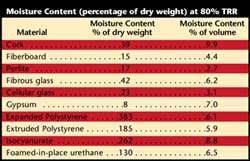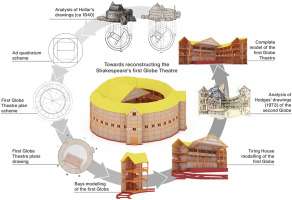In the heart of San Fernando‚ CA‚ a unique approach to sourcing and utilizing building materials is taking shape‚ redefining what it means to build sustainably and efficiently․ Forget the traditional lumber yards and big-box stores; a new model‚ centered around resourcefulness and community‚ is emerging․ This innovative system not only addresses the rising costs of construction but also minimizes environmental impact by prioritizing reclaimed and locally sourced items․ The concept‚ focusing on Arroyo building materials San Fernando CA 91340‚ promises to revolutionize the construction landscape within the region․
Rethinking Building Material Sourcing
The typical construction supply chain is often fraught with inefficiencies‚ long distances‚ and a significant carbon footprint․ The Arroyo model seeks to disrupt this by focusing on:
- Reclaimed Materials: Sourcing from demolition sites‚ renovations‚ and even waste streams․
- Local Suppliers: Partnering with artisans and small-scale producers within the San Fernando Valley․
- Resource Optimization: Utilizing materials that are often overlooked or discarded‚ such as repurposed concrete and reclaimed wood․
The Benefits of Local Sourcing
Sourcing building materials locally offers several key advantages:
- Reduced Transportation Costs: Minimizing the distance materials travel lowers fuel consumption and transportation expenses․
- Support for Local Economy: Investing in local businesses fosters economic growth and creates jobs within the community․
- Lower Environmental Impact: Reducing transportation emissions and promoting the use of sustainable materials contributes to a healthier environment․
The Arroyo Advantage: Sustainability and Cost-Effectiveness
This localized approach to building materials provides a compelling alternative to traditional methods․ It’s not just about saving money; it’s about building a more sustainable and resilient community․ By embracing reclaimed and locally sourced items‚ builders can reduce their environmental footprint‚ support the local economy‚ and create unique and character-rich structures․
Comparative Analysis: Traditional vs․ Arroyo Approach
| Feature | Traditional Building Material Sourcing | Arroyo Building Material Sourcing |
|---|---|---|
| Source | Large Manufacturers‚ Distant Suppliers | Local Suppliers‚ Reclaimed Sources |
| Environmental Impact | High Carbon Footprint‚ Resource Depletion | Lower Carbon Footprint‚ Resource Conservation |
| Cost | Potentially Higher Costs (Fluctuations) | Potentially Lower Costs (Reclaimed Materials) |
| Community Impact | Limited | Positive (Supports Local Economy) |
The future of construction in San Fernando may well depend on embracing innovative approaches like the Arroyo system․ The focus on Arroyo building materials San Fernando CA 91340‚ promises a future where building is not just about creating structures‚ but about fostering a sustainable and thriving community․
The implementation of this paradigm shift necessitates a collaborative effort involving architects‚ contractors‚ policymakers‚ and the community at large․ Architects must embrace design principles that prioritize material efficiency and the integration of reclaimed elements․ Contractors require training and education on the proper handling and utilization of these alternative materials․ Policymakers can play a crucial role by incentivizing the use of sustainable building practices and streamlining the permitting process for projects incorporating reclaimed materials․ Furthermore‚ community engagement is essential to foster awareness and acceptance of this innovative approach․
ADDRESSING CHALLENGES AND ENSURING QUALITY
While the Arroyo model presents numerous advantages‚ certain challenges must be addressed to ensure its successful implementation․ One primary concern revolves around the quality and consistency of reclaimed materials․ Rigorous inspection and testing protocols are necessary to verify that these materials meet the required structural and performance standards․ Furthermore‚ establishing clear guidelines for the sourcing‚ processing‚ and certification of reclaimed materials is paramount to maintain public trust and confidence․
CERTIFICATION AND STANDARDIZATION
The development of industry-wide standards and certification programs for reclaimed building materials would significantly enhance their credibility and market acceptance․ These standards should address:
– Material Identification and Grading: Establishing a clear system for classifying and grading reclaimed materials based on their quality and properties․
– Testing Procedures: Implementing standardized testing methods to assess the structural integrity‚ durability‚ and safety of reclaimed materials․
– Certification Process: Developing a certification program that ensures compliance with established standards and provides consumers with assurance regarding the quality of the materials․
THE LONG-TERM VISION
The ultimate goal of the Arroyo building materials initiative is to create a self-sustaining ecosystem that promotes circularity and minimizes waste within the construction industry․ This involves not only sourcing reclaimed materials but also designing buildings for deconstruction and reuse․ By embracing a cradle-to-cradle approach‚ we can create a future where building materials are treated as valuable resources rather than disposable commodities․ The successful implementation of such projects using Arroyo building materials San Fernando CA 91340‚ will inspire others to adopt sustainable practices and contribute to a more resilient and environmentally responsible built environment for generations to come․






